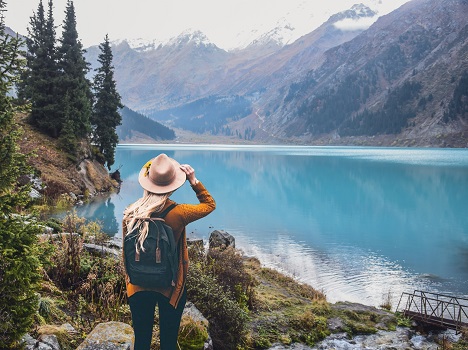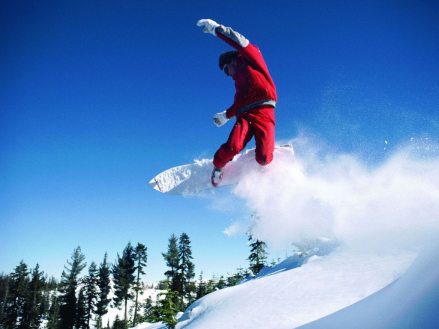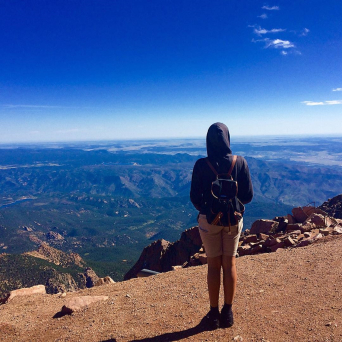- Share
This is not a complete list of all of the opportunities to feel like a Nomad, but you have to start somewhere
A rider races across the endless steppes, strapped with bow and arrows, to return home with the catch of the day attached to his saddle. It is already dusk and the young man is coming home from the days of hunt to his aul, where the white domes of the yurts can already be seen. There his wife, a young seamstress awaits for him. Everything that she makes is elegantly hand crafted: woven carpets made of sheep’s wool, the decorated clothes that are traditionally embroidered or crochet “biz keste”, beshbarmak and fried baursak. And soon she will give her husband a future heir. Their life line will continue….
A similar romantic lifestyle of believers in God Tengri is drawn in the head after reading many nomadic books. Of course, there are harsh conditions that the nomadic people face on a daily basis: the need to raise cattle and livestock, protecting them from wolves, preparing for winter, building shelter “kora” for livestock to save them from the bitter cold, and defending the people from enemies, but this is not about that.
Together with you, the guests, we want to recreate this fantasy so that you can feel as if you are living the life of a nomad in Kazakhstan. The word nomad in the best sense represents fearlessness, strength, and romance.
Under the peaceful shanyrak*
The first and most authentic way to experience the life of the nomads is an opportunity to live in the classical home of the nomads, so called “yurt” in Central Asia. Lying on the soft korpe (bedspread to sit on), looking through the shanyrak to the sky, you will absolutely feel united with the universe and its indescribable calmness that it has on your soul… Historians write that, “the yurt represents the highest form of nomadic architecture and folk art. Shanyrak by itself is worth talking about, and for Kazakhs it has a great symbolic meaning. This is the symbol of home, it is a continuation of genus. Shanyrak is not accidentally depicted on the national emblem of Kazakhstan. Through Shanyrak the sunlight falls on the yurt catching every ray, and at this moment patterns appear on the walls in the yurt in various designs in the traditional korpe (blankets, mattresses, bedsrpeads, etc.). So there it is! Take our word for it, the atmosphere in the nomadic home will not leave anyone indifferent!
The doors for travelers are wide open in every corner of Kazakhstan, to rest and relax at resorts that have the traditional, and not just that, yurts. A traditional yurt is an eco-friendly easily folded, framed building covered with very thick felt. Inside such yurt it feels warm in winter and cool in summer.
Moreover, there are modern yurts with walls that are built entirely of wood and remind of authentic yurts. Modern yurts are equipped with all amenities inside like a restroom with shower. These yurts have everything that you can find in a hotel: heating, double beds, a table, TV with cable television, landline telephones, and even Wi-Fi connection.
There is also a territory where guests are usually shown jigitovka and other Kazakh national games. If tourists have some time, they can learn how to saddle up on a horse and ride by the nearest attractions. Fortunately, there are many of them in our country.
*Shanyrak is a constructive element that sets like a crown on the top of the yurt in the form of a lattice cross inscribed in a circle. Designed to hold the sides of the yurt the dome also provides sunlight for its residents and releases smoke from the foci when cooking.
The journey into the past
Take a dive into the life of the nomad, get connected to their culture by being at nomadic ethno-festivals that take place in an improvised ethno-aul in Kazakhstan. This is the second way to immerse oneself into the life of the nomad. During the festival, guests may learn about customs and traditions of nomads.
Here you can take pictures with “real” Kazakh Khan or with brave Batyr. Have the chance to see and try out some of the original ancient weapons used by Kazakh nomads, that include shooting a bow and arrow and much more….
Nomad Hunter
The third authentic route to living like a nomad is holding of a tamed golden eagle. In an instant, you get the sensation of being a nomad-hunter for just a few hours of the day, you could even safely carry this majestic creature as your pet, and on a hunt with one goal. Hunting for nomads always meant a support to cattle breeding, moreover, it had great educational significance. Since ancient times in the steppes they had developed an individual and collective hunt on saigas, roe deer, and foxes. They hunted with bird traps and with greyhounds. Today in Kazakhstan there are opportunities to participate in tournaments such as Golden Eagle handler or Falconer. There are even imitation hunts with predatory birds that catch artificial “prey.” There is also an opportunity to talk with a real eagle hunter about their work. All of these will certainly make a great impression on the guests. And, if you desire so, you can register through travel companies to be a participant in one of the real hunts with bird traps in the wilderness!
Delicacy in the traditional cuisine
All of the famous main dishes for nomads were made from the cattle that they raised: researchers say that the average person per year accounts for up to four (close to 65 kgs) pounds of meat, 350 liters of milk and Kumis! Therefore one must be prepared for the important task of “feeling like a nomad” through testing of the body’s ability to consume a large amount of delicious meat in different dishes, like Beshbarmak, Kuyrdak, Sirne and many more…
However, to digest all of this food you will need the help of the traditional sour-milk made by the nomads known as Kumis or Shubat.
Don’t forget about the eastern delicacy - kurt. This is dried salty cheese ball made from sheep’s milk. Nomads would take kurt on long distance journeys, and did not worry about surviving, since kurt does not need to be refrigerated and doesn’t spoil.
Crafts and Needlework
The fifth way to feel like a nomad is hand-made traditional art piece under the guidance of a master craftsman/woman. In nomadic society there were all kinds of masters in the various sectors of the economic industry. Very highly valued blacksmiths and their tools were considered to be sacred… To be a participant in a master-class is possible in any region in Kazakhstan, when the proper arrangements have been made. This is practiced in the auls, in the villages where the guest houses function. Here travelers can learn how to carve products made out of bone and wood. Test your abilities as a blacksmith: work with iron. Becoming acquainted with traditional weaving, crocheting, embroidering, and felting can be interesting to women.
This is not the full list of many ways to feel like a nomad, but you have to start somewhere!

















